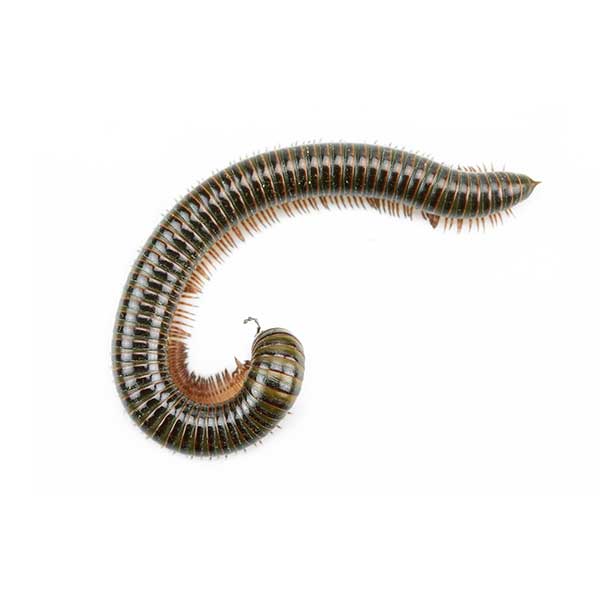
Millipede
Category Insects
Actual Size: ½ to 6 ½ inches
Characteristics: Long, cylindrical bodies that are usually dark brown or black. Some species have up to 400 legs.
Legs: Common species have up to 400 legs.
Antennae: Yes
Wings: No
Habitat: Commonly found hiding under rocks, logs, and dense vegetation. They are drawn to moist environments, often thriving in damp soil, leaf litter, and decaying organic matter.
Habits:
- They are typically nocturnal and prefer to be active at night.
- Primarily feed on decaying plant material, dead leaves, and other organic matter.
- When threatened, millipedes curl up into a tight spiral as a defense mechanism.
Millipedes in Florida
Millipedes, often referred to as “thousand-leggers,” are common household pests. Typically, they live outdoors, feeding on decaying wood, vegetable matter, and tender plant roots. Many species use glands to release a foul odor as a defense mechanism. They can be found in all U.S. states, including Alaska and Hawaii, and in Puerto Rico. Although harmless to humans, their presence indoors can be unsettling, as they tend to gather in moist, dark areas like basements or bathrooms.
Millipede Habitat
In the wild, millipedes are scavengers that primarily consume decaying organic matter. They may occasionally feed on young plants, but the damage is usually minimal. Due to their high moisture needs, millipedes prefer to stay hidden under objects during the day. At night, they often leave their natural habitats to roam sidewalks, patios, and foundations. During certain seasons, particularly autumn, they may invade buildings in large numbers.
Millipede Behaviors, Threats, or Dangers
Although millipedes may enter buildings in large numbers, they do not bite, sting, or spread diseases, and they do not infest food, clothing, or wood. Their main issue is being a nuisance, often invading crawl spaces, damp basements, and ground-level floors. Frequent indoor sightings usually indicate a large population breeding outside in the lawn, mulch, or leaf litter near the foundation. Since millipedes need moisture, they typically won’t survive indoors for long unless the environment is particularly damp.
If millipedes are overwhelming your Florida property, the team at Arrow Environmental Services can assist you.
